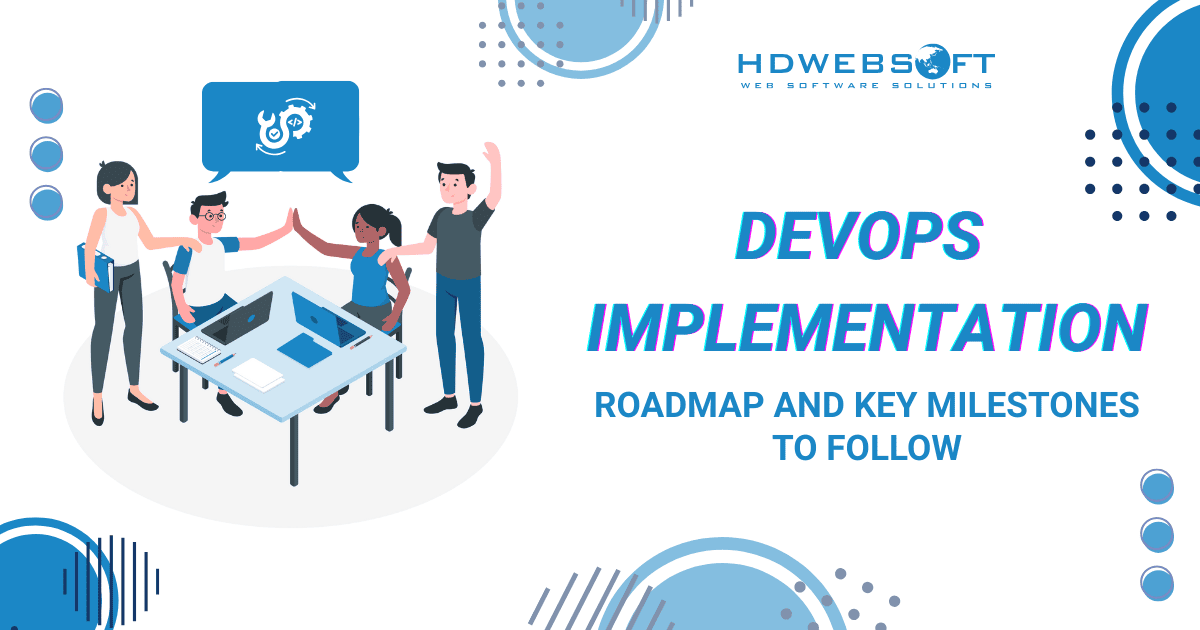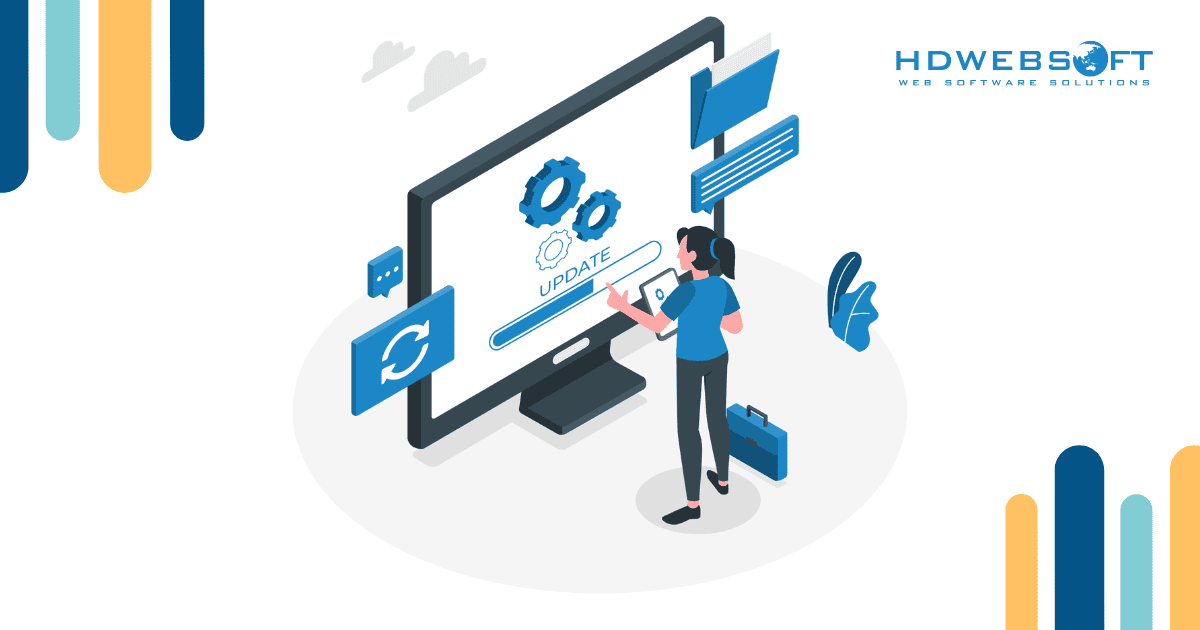
DevOps Implementation Roadmap: Key Milestones to Follow
DevOps implementation represents a fundamental evolution in how organizations approach software development and IT operations. It fundamentally transforms the relationship between these often disparate teams. This crucial process involves more than just adopting new tools. It requires building a collaborative culture and integrating automation across the entire software delivery pipeline. Ultimately, successful DevOps implementation aims to significantly accelerate innovation and deliver business value with increased speed and efficiency.
This post will guide you through the landscape of adopting this modern approach. We will first explore the typical challenges and the status quo many organizations experience before embarking on a DevOps journey. Subsequently, to ensure clarity and set realistic expectations, we will address common misconceptions and clarify precisely what DevOps entails. Finally, we will outline a practical blueprint and key steps essential for planning and executing your own effective DevOps implementation strategy.
- 1) The Pre-DevOps Implementation Landscape
- 1.1) Different software development models
- 1.2) Strict segregation of duties across departments
- 1.3) Insufficient test coverage throughout the pipeline
- 1.4) High risk of bugs after release
- 1.5) User distrust in software quality
- 1.6) Long wait for bug fixes and updates
- 1.7) Time-intensive infrastructure setup
- 2) What DevOps Brings to the Table
- 3) Common Misconceptions About DevOps
- 4) Roadmap for DevOps Implementation
- 5) Conclusion
The Pre-DevOps Implementation Landscape
Despite the wide availability of information on DevOps, many resources still lack practical guidance. There are insufficient concrete steps to start DevOps adoption and ensure its success. As a result, teams may struggle to speed up software development and streamline operations.
Different software development models
Traditionally, companies choose among three main models for software development:
- One approach is in-house development. Here, the company’s internal team handles the work, with strong financial and human resource investment in the development process.
- Another option is full outsourcing. If the company lacks in-house IT resources, it may rely on third-party vendors to handle software development completely.
- A mixed model is also common. For example, internal teams handle development, but QA tasks are assigned to external providers due to limited internal QA expertise.
Strict segregation of duties across departments
In many companies, responsibilities are divided across multiple departments. Development teams write the code, testing and QA teams handle bug detection, and operations teams maintain the production environment. These teams often operate in silos.
As a result, collaboration is weak. Security is managed by a separate team, which may be seen as a blocker. Their role in identifying vulnerabilities and enforcing fixes can extend the project timeline and delay DevOps implementation.
Insufficient test coverage throughout the pipeline
Developers usually write unit tests early in the cycle to check small, individual components. However, these tests do not catch integration issues or overall performance problems.
To verify how different parts of the application work together, QA engineers perform both manual and automated testing through the user interface. Still, the level of test automation often falls short. Even critical features may not be fully covered, which limits the effectiveness of DevOps adoption.
High risk of bugs after release
Although QA teams perform various types of testing, continuous testing is not integrated throughout the entire development cycle. As a result, testing gaps appear, and serious bugs often go unnoticed until after release.
When these issues are reported by users, test engineers may struggle to reproduce them. This often occurs due to key differences between the testing and production setups, which negatively impact DevOps implementation. Specifically:
- The configuration settings in test and production environments may differ significantly, making bugs hard to replicate.
- The build versions deployed in each environment may not match, leading to inconsistencies and missed defects.
These discrepancies increase the risk of undetected errors and slow down the development process.
User distrust in software quality
Because severe bugs often appear after release, business users may lose trust in the application’s quality. They resort to manual acceptance testing before using the software. But users are focused on their core responsibilities, so their feedback arrives late.
Hence, it’s important to gather feedback from real users in the development process instead of waiting until release. Launching an MVP is also a good choice in this situation.
Long wait for bug fixes and updates
Due to limited collaboration among development, QA, and operations teams, small changes or bug fixes can take 2 to 4 weeks to deploy. This delay is especially harmful when software supports key business processes and hinders the goals of DevOps implementation.
Time-intensive infrastructure setup
Setting up infrastructure for development, testing, and production environments may take days or even weeks. System administrators often do this manually, increasing the risk of misconfiguration. Moreover, adjustments and tuning require additional time. These delays cause infrastructure provisioning to be a bottleneck in the adoption of DevOps.
What DevOps Brings to the Table
As to overcome the limitations of traditional software development and IT operations, we strongly recommend considering the DevOps adoption approach.
Organizations that adopt DevOps can build and deliver stable applications quickly by applying various modern practices and tools. These applications typically come with robust, well-tested functionality. Compared to conventional development methods, companies using DevOps experience fewer delays, reduced rework, and faster time-to-market. Drawing on our practical experience with DevOps, we outline below the major advantages this approach offers.
Constant communication among DevOps teams
One of the first improvements brought by DevOps implementation is transparent communication among all teams involved in the development lifecycle. Instead of working in silos, developers, QA engineers, and system administrators coordinate closely from the start. As a result, they can prepare and release new software components faster. All the while, the chance of undetected bugs making their way into production was significantly lowered.
Consistent environments across the software lifecycle
Another major benefit is the ability to eliminate software failures caused by mismatched environments. In traditional setups, discrepancies between development, testing, and production infrastructures often lead to unexpected issues.
However, by applying Infrastructure as Code (IaC), DevOps teams can create identical environments across all stages. This means that a DevOps engineer can set up a development or testing environment that is fully aligned with the production environment. Consequently, developers and testers work in stable and predictable setups, reducing the risk of environment-related failures during deployment.
Faster delivery of new infrastructure
In addition to improving consistency, DevOps implementation accelerates the provisioning of infrastructure. Since infrastructure is now treated as code and stored in reusable formats, it can be easily replicated across projects. Thus, teams no longer need to rely on manual efforts from system administrators to build new environments.
Whenever a new project begins, infrastructure can be deployed in a matter of minutes, greatly improving efficiency and responsiveness.
Higher levels of test automation
Testing processes also undergo a significant transformation during DevOps adoption. Continuous testing becomes a standard practice, supported by advanced automation tools such as Selenium, Zephyr, and Tricentis Tosca.
These tools execute different testing types, including unit, functional, and integration tests, automatically and repeatedly. Resultantly, bugs are identified earlier and more reliably, allowing for prompt resolution and reducing the need for lengthy manual testing.
Maybe you’re interested: AI Testing – The Future of QA.
Fast and dependable software updates

Moreover, the practices contribute to the quick and consistent delivery of application updates. The introduction of application release automation (ARA), combined with improved team collaboration from DevOps implementation, shortens the release cycle dramatically.
Instead of depending on manual deployment processes, which are often prone to configuration errors and downtime, teams can adopt ARA. As a result, it helps deploy new builds with minimal interruptions and improved reliability.
Common DevOps tools that support application release automation include:
- Jenkins: widely used for automating build and deployment pipelines
- Octopus Deploy: focuses on release management and deployment automation
- Spinnaker: supports multi-cloud continuous delivery
- GitLab CI/CD: integrates ARA with source control and issue tracking
- AWS CodeDeploy: automates deployments to EC2, Lambda, and on-premises servers
Fewer errors after release
A notable improvement from implementing DevOps is the reduction of post-release issues. Since automated testing is integrated throughout the entire development process, QA teams can evaluate code at every stage. In turn, more bugs are detected early, before the software reaches production. This leads to smoother rollouts and reduces the time spent on post-release troubleshooting.
Greater trust from business users
Finally, user confidence in software quality also improves under the DevOps implementation model. With fewer bugs and stronger testing practices, business users begin to trust that the application meets their standards.
Moreover, involving users in defining key acceptance tests ensures that their critical requirements are addressed. Once they recognize that automated tests reliably cover essential functionality, they feel less need to perform additional manual testing. This not only speeds up the release approval process but also minimizes delays caused by user-side verification.
Common Misconceptions About DevOps
As DevOps gains traction, so do the misunderstandings surrounding it. Therefore, before initiating the shift to DevOps in your company, you must develop a clear and accurate understanding of what it truly involves.
- Implementing DevOps isn’t just automation. While automation helps speed up builds and reduce manual errors, it’s only one part of the approach. DevOps is mainly about reshaping collaboration and streamlining development and operational processes.
- Using DevOps tools alone doesn’t equal DevOps implementation. We’ve introduced some tools to support the process, but they aren’t enough on their own. Teams also need to adopt practices such as continuous testing, integration (CI), and delivery (CD) to truly benefit from DevOps.
- You don’t need a new department to implement DevOps. It’s not necessary to reorganize your company structure. Instead, train your current development, QA, support, and operations teams to configure tools and apply the practices effectively.
Roadmap for DevOps Implementation
Once you’ve carefully evaluated all relevant factors and made the decision to adopt DevOps in your organization, the next critical step is to follow a structured implementation roadmap. Below, we break down the key stages to guide a smooth transition from traditional software development methods to the approach.
Initiating a DevOps Program
To begin, the CIO should initiate a dedicated DevOps implementation initiative as part of the broader IT strategy. This step ensures any changes to development and operational workflows are introduced gradually and with minimal disruption across the company.
In this setup, the CIO plays a central role in allocating financial and human resources efficiently. Meanwhile, a program manager is typically appointed to shape the DevOps strategy and supervise its implementation throughout the project lifecycle.
Defining the DevOps Strategy
A well-defined DevOps strategy is fundamental to long-term success. The program manager should adopt best practices aimed at improving cross-functional collaboration. In addition, these practices help transform how infrastructure, development, and testing are handled. The following points are essential:
- Encourage development, testing, design, operations, and other involved teams to work within a shared DevOps environment. This unified workspace promotes understanding of each team’s responsibilities and reinforces a common goal. It is to speed up the development cycle while maintaining software quality.
- Apply IaC to deliver IT environments quickly upon request. When developers or testers need new environments to build or validate software, they can get them instantly. Consequently, it minimizes wait times and avoids the risks associated with manual configuration errors.
- Automate the processes for building code, running unit and UI tests, integrating software, deploying releases, and performing post-deployment tasks. This comprehensive automation accelerates the entire build-test-release cycle, ensuring efficiency and repeatability.
Implementing Containerization
Containerization is a vital component of the DevOps implementation approach. Tools like Docker package all the necessary dependencies, libraries, and configuration files into self-contained units. These containers ensure that applications behave consistently across development, testing, and production environments. Ultimately, they eliminate common errors caused by environmental differences.
Additionally, by placing different components of the application into separate containers, operations teams can manage microservices more effectively. In turn, updates can be applied to individual services without needing to rebuild the entire application.
Further Reading: How Does Vue.js Adapt to Microservices?
Integrating Infrastructure Automation with CI/CD
Once containerization is in place, infrastructure automation becomes the next priority. By integrating tools with CI/CD platforms, teams can streamline configuration management and deployment processes.
For instance, Kubernetes is ideal for managing containers at scale, offering capabilities like fault tolerance, performance monitoring, and seamless updates. In parallel, Jenkins facilitates the creation, testing, and deployment of new application builds directly into container orchestration platforms.
Expanding Test Automation Practices
To fully leverage the speed benefits of DevOps implementation, test automation must be scaled appropriately. However, not all types of testing should be automated. Manual testing remains necessary for exploratory, usability, and certain security checks. Meanwhile, functional testing may be partially automated, depending on the effort required to develop test scripts.
Importantly, development and testing should run in parallel. While the application is still under construction, it’s a best practice to execute automated tests once or twice daily. When issues are found, developers address them immediately, ensuring that each subsequent build is more stable than the last.
Monitoring Application Performance End-to-End
Finally, a comprehensive application performance monitoring strategy is key to maintaining high-quality standards. This step allows DevOps teams to identify and resolve performance issues before they impact users.
Monitoring may involve tracking server health, analyzing user interactions, and performing real-time diagnostics. Tools like Zabbix, Nagios, and Prometheus can be tailored to the specific needs of your application. They can assist in detecting issues early, prioritizing fixes, and tracing root causes efficiently.
Conclusion
Before DevOps implementation, it’s important to assess the required time, organizational changes, and new technologies. These factors are essential for ensuring the success of your DevOps initiative. One of the most significant advantages DevOps offers is faster software delivery. At the same time, it helps maintain high quality throughout the development cycle.
HDWEBSOFT is a trusted DevOps service provider that helps businesses streamline their software development and IT operations. Our service offering combines automation, cloud infrastructure, and CI/CD to accelerate release cycles and improve system reliability. With proven expertise and a tailored approach, we support organizations in building a scalable, collaborative DevOps culture.















